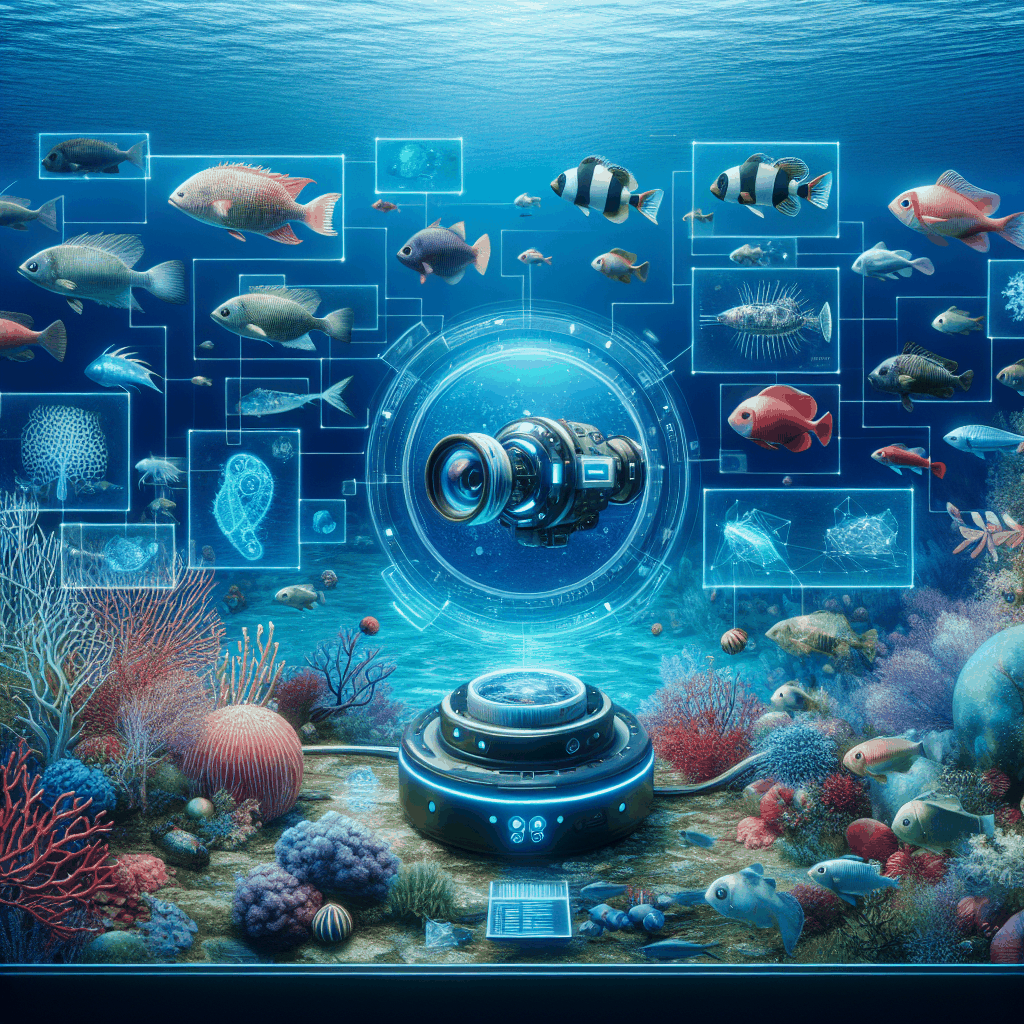Introduction to AI in Marine Biology
Artificial intelligence is rapidly impacting various domains, and marine biology is no exception. AI is proving to be incredibly beneficial in accurately identifying, cataloging, and studying deep-sea fish. With the growing need for efficient analysis of massive underwater data sets, AI’s role is significant. The combinative use of AI and marine biology is paving the way for unprecedented discoveries in underwater ecosystems. The integration of these technologies is revolutionizing how marine biology research is conducted, bringing a new level of understanding and preservation of marine life.
Understanding Deep Sea Fishing
Deep-sea fishing poses unique challenges due to the extreme depth conditions and inaccessible species diversity. Traditional methods often disturb the natural habitat and lack accuracy in fish identification. AI technology provides a better alternative, allowing precise detection and data analysis, while causing minimal disruption to the marine ecosystem.
The Role of AI in Identifying Fish
Artificial intelligence utilizes algorithms and machine learning techniques to accurately identify and catalog fish species. High-resolution underwater cameras and sonars capture images and videos of diverse deep-sea fish. AI-powered software then analyzes these images, differentiating fish species based on unique patterns, shapes, and movements. Unlike human observers, AI doesn’t suffer from fatigue, allowing it to examine vast footage promptly and consistently. Additionally, AI can identify fish species even in poor visibility conditions, where traditional identification methods fall short. In real-time, it can also track fish movement, aiding in understanding their behavior and patterns. Thus, AI has become an indispensable tool in deep-sea fish identification, contributing to efficiency, accuracy, and ecological preservation.
How AI Revolutionizes Fish Identification
AI’s revolutionizing impact on fish identification is multifaceted. Primarily, it enables the analysis of vast amounts of data in a short time, something not feasible with human-only efforts. It can effectively categorize numerous species of fish, even those that look similar, leading to an increased accuracy in species identification. Moreover, AI’s ability to swiftly analyze fish behaviors and movements allows for better ecological and behavioral studies of marine life. Lastly, it ensures minimal disturbance to the marine environment, thereby promoting the essential balance of marine ecosystems.
Modern Technology for Age-Old Practices
Incorporating modern technology into age-old practices offers great opportunities for marine biology. By replacing conventional, invasive methods with AI-assisted techniques, we can conduct fish identification and tracking with unprecedented efficiency and accuracy. AI not only supports the gathering of reliable data for species conservation but also abates the detrimental human interference in marine life. Advanced AI algorithms can even calculate fish populations and anticipate their migratory patterns. Ultimately, AI heralds a new era in marine biology, seamlessly merging technology with traditional practices to yield sustainable and scientific solution.
Critical Impact of AI on Deep Sea Fishing
Artificial intelligence is transforming the way researchers approach deep-sea fishing, permitting a swift and comprehensive analysis of marine species. The use of AI helps in identifying overfishing zones and species that are nearing extinction, facilitating better conservation strategies. In the commercial sector, it can refine fishing methods, widening the capture of desired species and minimizing bycatch. It also minimizes the resources spent on human observers on fishing vessels, leading to substantial financial savings. Hence, AI integration in deep-sea fishing delivers a profound impact, revolutionizing the industry while fostering sustainable practices.
Introduction to Common Deep Sea Fish Species
The vast depths of the world’s oceans are home to a diverse array of fish species, many of which remain largely unexplored. Common deep-sea fish include creatures such as the anglerfish, known for its bioluminescent lure, and the fangtooth fish, one of the world’s deepest-living fish species. Other species like the snipe eel and viperfish are distinguished by their peculiar shapes and adaptations to the hostile deep-sea environment. Understanding these species and their behaviors is critical, as it offers valuable insights into the overall health and functioning of the marine ecosystem.
AI’s Role in Identifying Common Deep Sea Fish
Artificial intelligence contributes substantially in identifying common deep-sea fish species. By employing machine learning algorithms and image recognition technology, AI can discern physical characteristics and behavioral patterns distinguishing different fish. Using underwater footage gathered by high-resolution cameras, AI models can recognize fish such as the anglerfish, fangtooth fish, snipe eel, and viperfish, even amidst low clarity conditions. This has particularly boosted the study and understanding of rarely spotted species, revealing new facets of deep-sea biodiversity. Additionally, AI notifies any significant changes or unusual occurrences in these fish’s patterns, suggesting ecological shifts. Therefore, AI serves as an invaluable tool in cataloguing and studying common deep-sea fish, enabling a depth of study previously impossible.
SEO Powered ByBreakout Content AI
